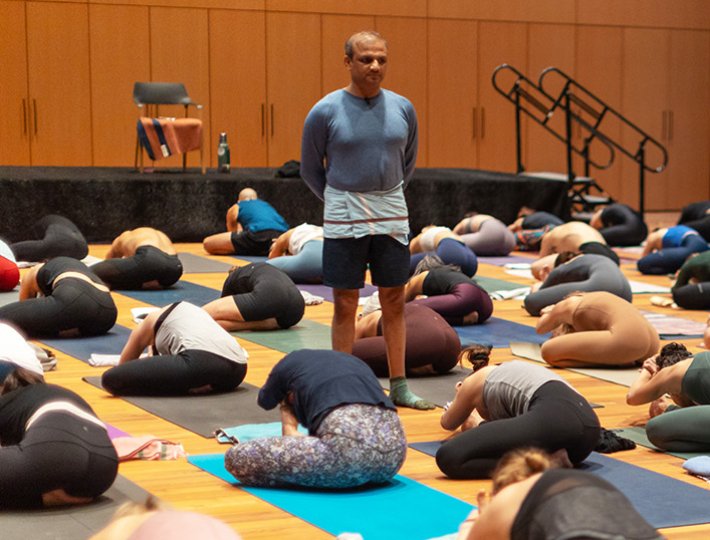If you’ve ever had a blister from, say, breaking in new shoes, you know firsthand how uncomfortable and frustrating it can feel to walk around or exercise with a nagging ouch. While that tenderness will eventually subside as the shoe molds to your foot, some other issues, such a sharp pain in your heel or arch, could worsen over time if untreated. Unfortunately, that’s what the majority of us do, hoping it just, poof, goes away.
According to a 2014 survey from the American Podiatric Medical Association, 77 percent of U.S. adults over age 18 have experienced foot pain. Of those people, only a third have visited a podiatrist for help. If the pain is fleeting, it’s understandable why you might not seek assistance. But if it’s reoccurring, it’s important to break the cycle of hurt before it develops into one of two types of foot injuries: traumatic (single-time injuries like a sprained ankle or broken bone) or microtrauma (those that occur over time usually from overuse).
“Repetitive stress injuries that occur over time are caused by extrinsic factors such as training errors or intrinsic factors, such as biomechanics deficits in flexibility, mobility, and stability,” says chiropractic physician Josh Sandell, D.C., the chief clinical officer of Orthology, a nationwide patient-focused facility for orthopedic care, and sports medicine specialist to the Minnesota Vikings. This causes abnormal strains and stressors throughout the kinetic chain and may result in an injury if you are not able to effectively adapt to these stressors or effectively compensate.
If you don’t want to end up needing crutches, don’t discount foot pain. Instead use this guide to better understand what you’re feeling and how you can ease the ache so that you can continue to make strong strides towards your life and fitness goals. After you’ve healed, consider seeing a physical therapist, trainer, or posture specialist to get your balance and strength assessed as well as your running and walking gait so that you’re better fitted for proper, supportive footwear.
1. Where it hurts: Heel
Possible causes of pain: Plantar fasciitis or Achilles tendinopathy. “Plantar fasciitis is the heel pain that’s the most common athletic injury I see in general, and many people think of it as synonymous with a heel spur,” says Jason B. Morris, D.P.M., foot and ankle specialist at Beach City Orthopedics, Manhattan Beach, California. Plantar fasciitis involves pain and inflammation of the tissue called the plantar fascia that runs across the bottom of the foot and connects your toes to your heel bone. Achilles tendinopathy is a non-inflammatory heel pain that occurs in the Achilles tendon where your lower leg connects to your heel. “People implement intense heel workouts into their routine and often do the Terrible Too’s: too much, too quickly, too often, and too little rest or recovery,” Sandell says.
What it feels like: Plantar fasciitis results in a stabbing pain in the bottom of your foot, near the heel. For Achilles tendinopathy, you may experience a swelling, stiffness and weakness of the Achilles tendon.
Best remedy: A foot specialist might prescribe rest, orthotic shoe inserts, and stretching and strength training for your lower body so that your feet aren’t tasked with absorbing all of your weight. (You can also try these simple exercises to help relieve the pain.) When you run, for example, your hips and muscles around your knees should be the body’s primary shock absorbers, Sandell says. “If those muscles are weak, your foot has the responsibility of absorbing two to three times your bodyweight every time it hits the ground.” Make sure you also have a stretching routine for the soleus (calf muscles), hamstrings, hip flexors, and the adductors (groin muscles).
RELATED: The Essential 8-Minute Workout for Marathon Runners
2. Where it hurts: Arch
Possible causes of pain: Arch pain generally develops from overuse, wearing unsupportive shoes, weight gain, or an acute injury. It is often attributed to inflammation or strain from plantar fasciitis.
What it feels like: Pain that shoots into your arches, especially when you first step out of bed in the morning.
Best remedy: If pain persists for a few days straight, see a foot and ankle surgeon for treatment to prevent this condition from getting worse. “Have your shoes assessed since that’s the most important piece of equipment, especially runners,” Sandell says.
3. Where it hurts: Top of the Foot
Possible causes of pain: A stress fracture. “If you’re picking up a new activity that your foot isn’t used to, you’re putting your foot at a higher risk of stress fracture,” Morris warns. For example, quickly increasing your mileage when training for a race, switching sports that involve a change of motion (i.e., going from running to tennis), or occasionally wearing high heels during your workday. Once you’ve subjected your foot to an increased stress that it’s not used to that bone can fail, Morris says. Other folks at risk: Over-pronators and people with high arches. They may be more susceptible to stress fractures inside and outside the foot, respectively.
What it feels like: You might not notice a stress fracture at first. It could feel like general pain in one area on the top of your foot that progressively gets worse and possibly includes some swelling. But a lot of people can have a stress fracture for a few weeks or months without realizing it.
Best remedy: Ask for an MRI scan, which may better detect hairline bone fractures over an X-ray. If you have a stress fracture, you’ll need to temporarily stop exercising and may be prescribed a walking boot or crutches.











Comments (0)